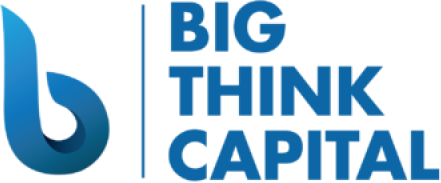The Definitive Guide to Navigating Inflation Trends and Securing SBA Loans: Tackling Common Questions about Small Business Funding in Today’s Economy
Estimated reading time: 8 minutes
- Understanding inflation trends is crucial for small businesses to adapt their strategies.
- Small Business Administration (SBA) loans provide valuable funding opportunities amidst rising costs.
- Developing strong relationships with banks can improve access to financing.
- Strategic financial planning is essential to navigate inflation challenges.
- Identifying the right financial tools can support diverse business scenarios.
Table of Contents
- Understanding Current Inflation Trends
- Impact of Inflation on Small Businesses
- Practical Strategies to Cope with Inflation
- Securing SBA Loans amid Rising Inflation
- Identifying Financial Tools for Different Business Scenarios
- Establishing Strong Bank Relationships
- Conclusion: Navigating Small Business Funding in 2025
Understanding Current Inflation Trends
Inflation remains a pressing concern as prices for goods and services continue to rise. Recent data from the U.S. Bureau of Labor Statistics indicates that the Consumer Price Index (CPI) increased by 3.7% year-over-year as of August 2023. This gradual rise has implications for small businesses regarding consumer spending, operational costs, and access to capital.
Key Influencers of Inflation
Various factors contribute to inflation trends, including:
- Supply Chain Disruptions: Global events such as natural disasters or geopolitical tensions can hinder supply chains, leading to increased costs of raw materials and finished products.
- Monetary Policy: The Federal Reserve’s adjustments to interest rates directly impact borrowing costs. As the Fed raises rates to combat inflation, small businesses may find credit more expensive.
- Consumer Demand: As economies recover, demand for goods and services rebounds, which can elevate prices when supply fails to keep pace.
- Wage Growth: Higher salaries often lead to increased costs for business owners, which can drive price hikes as companies look to maintain profit margins.
For small business owners, understanding these trends is crucial for planning financial strategies and preparing to meet changing market conditions.
Impact of Inflation on Small Businesses
The ramifications of inflation can significantly influence the operational viability of small businesses. Where costs are increasing, owners must make critical decisions regarding pricing, staffing, and inventory management.
Challenges Faced by Small Businesses
- Rising Operating Costs: Increased prices of materials, labor, and transportation add to operational expenses, often outpacing revenues.
- Pricing Power Limitations: Many small businesses operate on thin margins and may struggle to pass on higher costs to consumers without losing customers.
- Access to Funding: As interest rates climb, securing affordable financing becomes increasingly challenging for small businesses, constraining their growth opportunities.
Opportunities Amid Inflation
Despite these challenges, inflation also presents unique opportunities. With the right approach, business owners can leverage the situation to strengthen their financial footing.
- Update Pricing Strategies: Businesses can use cost-plus pricing or value-based pricing techniques to adjust prices in response to inflation while communicating transparently with customers.
- Invest in Efficiency: Streamlining operations and reducing waste can help counterbalance increased expenses.
- Seek Diverse Funding Sources: Exploring alternative funding options can yield financial benefits without incurring burdensome debt.
Practical Strategies to Cope with Inflation
Navigating inflation effectively requires strategic planning and adaptability. Here are some practical strategies for small business owners looking to weather the storm:
Conduct a Financial Health Check
Perform a thorough review of your financial statements to assess cash flow, profit margins, and liabilities. Identifying areas to cut costs and improve efficiency can provide immediate relief.
Build Strong Supplier Relationships
Communicating with suppliers about pricing and availability can lead to better terms. Consider negotiating long-term contracts at fixed prices to hedge against potential cost increases.
Optimize Inventory Management
Employ just-in-time inventory systems to reduce carrying costs while ensuring you can meet customer demand without overextending financially.
Use Technology to Increase Efficiency
Investing in technology can streamline operations and enhance productivity. Tools such as accounting software and inventory management systems can provide insights that assist in decision-making.
Securing SBA Loans amid Rising Inflation
As inflation changes the landscape, many small business owners turn to SBA loans for financial relief. Understanding how to secure these types of loans is essential for sustaining operations.
What is an SBA Loan?
SBA loans are government-backed loans designed to support small businesses with capital needs. They often come with lower interest rates and longer repayment terms than conventional loans, making them an appealing option in an inflationary environment.
Eligibility Criteria for SBA Loans
To qualify for SBA loans, businesses generally need to meet specific criteria:
- Size Standards: The business must be classified as a small business by the SBA, typically having fewer than 500 employees.
- Creditworthiness: Lenders assess the owner’s credit score and the overall financial health of the business.
- Business Purpose: SBA loans are intended for legitimate business needs, such as purchasing equipment, real estate, or working capital.
The Application Process
The SBA loan application process typically involves several steps:
- Gather Required Documentation: Prepare financial statements, tax returns, and a business plan that outlines how the loan will be used.
- Choose the Right Lender: Research lenders familiar with SBA products to ensure they can guide you through the application process.
- Submit Your Application: Complete the application accurately and include all necessary documentation to help maintain a smooth review process.
Expert Tips for Securing an SBA Loan
- Strong Business Plan: A well-structured business plan demonstrates how you intend to use the funds and manage repayment.
- Personal Credit Scores: Ensure your personal credit score is in good shape, as it significantly influences lender decisions.
- Be Prepared for Questions: Banks may have specific concerns about repayment, especially during inflation, so be ready to address these during consultations.
Identifying Financial Tools for Different Business Scenarios
In today’s economy, one size does not fit all when it comes to financing. Awareness of diverse financial tools can enhance your ability to respond to varying business needs. Here are alternatives to consider:
Traditional Loans
Conventional loans typically offer larger amounts based on business creditworthiness. However, they can come with higher interest rates, especially under inflationary pressure.
Lines of Credit
A business line of credit provides flexible access to funds, allowing owners to withdraw only what is necessary and pay interest on the drawn amount, helping manage cash flow.
Equipment Financing
Investing in new equipment is essential for many small businesses. Equipment financing allows you to spread the cost over time and often comes with lower interest rates than conventional loans.
Working Capital Advances
These advances provide immediate cash flow for daily business operations. They can be beneficial when needing quick access to funds, but be mindful of their higher costs.
Establishing Strong Bank Relationships
Building robust relationships with banks and lenders can pave the way for better financing conditions in the future. Here is how business owners can foster these connections:
Open Lines of Communication
Regularly communicating your business goals with lenders can position you as a reliable borrower. Schedule quarterly meetings to discuss your progress and upcoming financial needs.
Be Transparent
Always provide lenders with accurate information about your business’s financial health. Transparency creates trust and fosters long-term partnerships.
Keep Lenders Informed about Changes
If there are changes within your business that may affect your ability to repay loans, proactively inform your lender. Early communication can lead to potential solutions rather than problems.
Conclusion: Navigating Small Business Funding in 2025
Inflation poses significant challenges but also offers opportunities for small businesses willing to adapt. By understanding current trends, employing effective financial strategies, and exploring SBA loans alongside other funding options, business owners can position themselves for success even in these turbulent economic times.
If you seek guidance in securing financing tailored to your needs, Big Think Capital is here to help. Learn more about our services or speak with a funding expert today by visiting bigthinkcapital.com. Let’s work together to ensure your business thrives in the ever-evolving financial landscape.
Frequently Asked Questions
What is the impact of inflation on small businesses?
The impact of inflation can lead to rising operational costs, reduced pricing power, and challenges in accessing funding.
How can small businesses secure SBA loans?
Small businesses can secure SBA loans by meeting eligibility criteria, preparing required documentation, and selecting the right lender.
What should small business owners focus on during inflationary periods?
Business owners should focus on understanding inflation trends, optimizing financial strategies, and building strong lender relationships.






